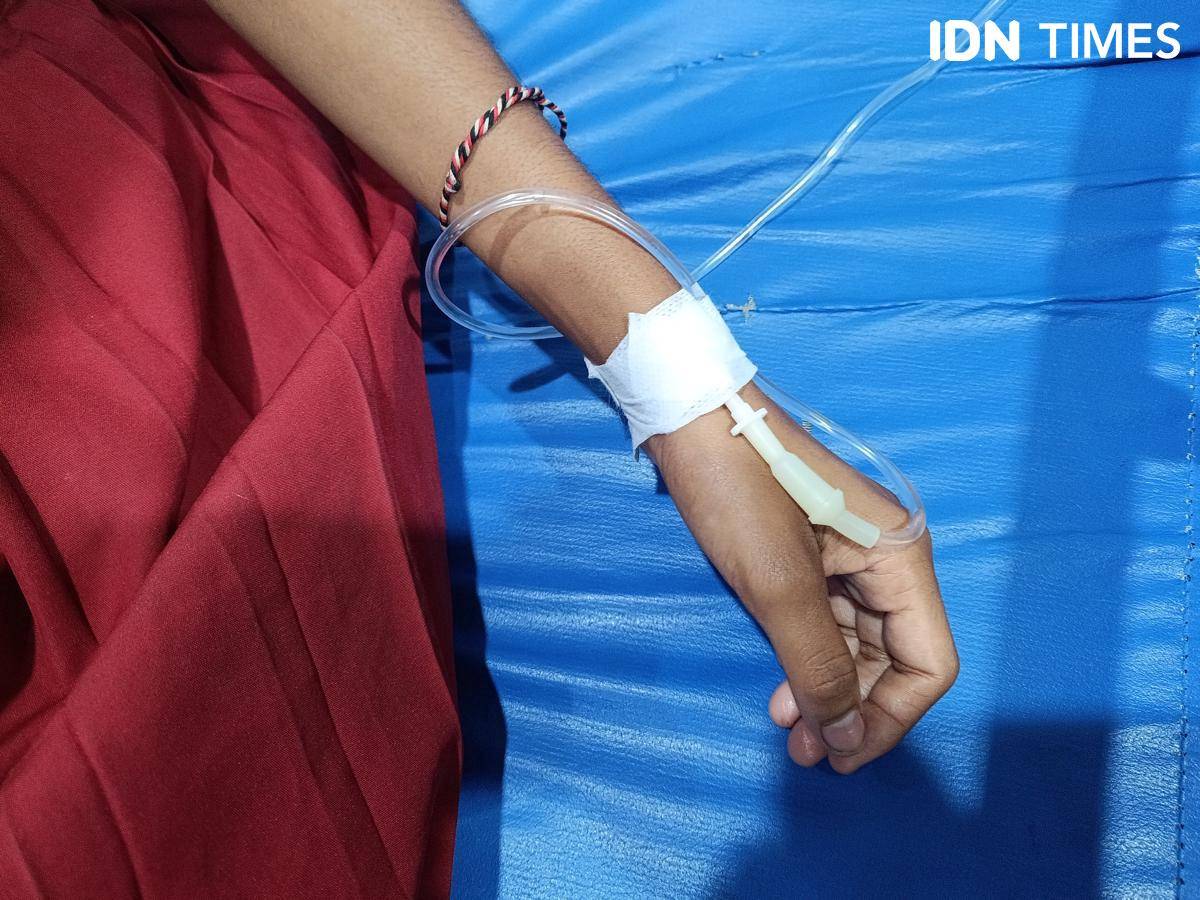Para peneliti juga menemukan bahwa makin besar ukuran hiu, makin tinggi pula kadar timbal yang terakumulasi.
Timbal sangat berbahaya bagi manusia. Paparannya dapat menyebabkan keluhan ringan seperti sakit perut dan sakit kepala, hingga masalah serius seperti kejang, koma, bahkan kematian. Mengonsumsi daging hiu, terutama dari spesies besar, hiu yang lebih tua, atau bagian organ dalam, dapat meningkatkan risiko keracunan timbal.
Dengan semua risiko dari logam berat seperti merkuri, arsenik, dan timbal, hingga racun biologis dan kontaminasi mikroba, daging hiu bukan pilihan yang aman untuk dikonsumsi. Bahayanya bukan cuma zat beracun yang terakumulasi secara alami dalam tubuh hiu, tetapi juga bagaimana hiu ditangani setelah ditangkap. Tanpa pengolahan yang tepat, risiko keracunan akan meningkat drastis dan dampaknya pada kesehatan pun tak main-main.
"Dapur Ditutup usai Siswa Keracunan, Orang Tua di Ketapang Tolak MBG." IDN Times Kaltim. Diakses September 2025.
"FDA/EPA 2004 Advice on What You Need to Know About Mercury in Fish and Shellfish." U.S. Food and Drug Administration (FDA). Diakses September 2025.
"Mercury." World Health Organization. Diakses September 2025.
"WHO FOOD ADDITIVES SERIES: 58 Safety evaluation of certain food additives and contaminants (PDF)" Joint FAO/WHO Expert Committee on Food Additives (JECFA) METHYL MERCURY. Diakses September 2025.
"Methylmercury poisoning." UCSF Health. Diakses September 2025.
Maria M. Storelli and Giovanni O. Marcotrigiano, “Persistent Organochlorine Residues and Toxic Evaluation of Polychlorinated Biphenyls in Sharks from the Mediterranean Sea (Italy),” Marine Pollution Bulletin 42, no. 12 (2001): 1323–1329, https://doi.org/10.1016/S0025-326X(01)00142-4.
Storelli MM, et al. "Concentrations and hazard assessment of polychlorinated biphenyls and organochlorine pesticides in shark liver from the Mediterranean Sea." Marine Pollution Bulletin 50(8):850–855 (2005). DOI: 10.1016/j.marpolbul.2005.02.023
Roubie E, et al. "Trace metals distribution in tissues of 10 different shark species from the Eastern Mediterranean Sea." Fishes 9(2):77 (2024). DOI: 10.3390/fishes9020077.
"Risk for animal and human health related to the presence of dioxins and dioxin‐like PCBs in feed and food." EFSA. Diakses September 2025.
"IARC Monographs on the Evaluation of Carcinogenic Risks to Humans Volume 107, 2015." Diakses September 2025.
Duk-Hee Lee et al., “A Strong Dose-Response Relation Between Serum Concentrations of Persistent Organic Pollutants and Diabetes,” Diabetes Care 29, no. 7 (June 26, 2006): 1638–44, https://doi.org/10.2337/dc06-0543.
Juan Muñoz-Arnanz et al., “Occurrence and Distribution of Persistent Organic Pollutants in the Liver and Muscle of Atlantic Blue Sharks: Relevance and Health Risks,” Environmental Pollution 309 (July 12, 2022): 119750, https://doi.org/10.1016/j.envpol.2022.119750.
"JOINT FAO/WHO EXPERT CONSULTATION ON THE RISKS AND BENEFITS OF FISH CONSUMPTION Rome, 25–29 January 2010 (PDF)." Diakses September 2025.
Diogène, J., Reverté, L., Rambla-Alegre, M. et al. Identification of ciguatoxins in a shark involved in a fatal food poisoning in the Indian Ocean. Sci Rep 7, 8240 (2017). https://doi.org/10.1038/s41598-017-08682-8.
Lauren Meyer et al., “An Investigation Into Ciguatoxin Bioaccumulation in Sharks,” Toxicon 119 (June 11, 2016): 234–43, https://doi.org/10.1016/j.toxicon.2016.06.007.
J. D. Oliver, “Wound Infections Caused by Vibrio Vulnificus and Other Marine Bacteria,” Epidemiology and Infection 133, no. 3 (March 1, 2005): 383–91, https://doi.org/10.1017/s0950268805003894.
"Risk assessment of Vibrio parahaemolyticus in seafood (2005)." FAO/WHO. Diakses September 2025.
"Fish and Fishery Products Hazards and Controls Guidance – Chapter 7: Scombrotoxin (Histamine) Formation. (2021)." FDA. Diakses September 2025.
Adnorita Fandah Oktariani et al., “Role of Marine Bacterial Contaminants in Histamine Formation in Seafood Products: A Review,” Microorganisms 10, no. 6 (June 11, 2022): 1197, https://doi.org/10.3390/microorganisms10061197.
"The Dangers Of Eating Shark Meat." Keiko Conservation. Diakses September 2025.
Sebastián A. Lopez, Nicole L. Abarca, and Roberto C. Meléndez, “Heavy Metal Concentrations of Two Highly Migratory Sharks (Prionace Glauca and Isurus Oxyrinchus) in the Southeastern Pacific Waters: Comments on Public Health and Conservation,” Tropical Conservation Science 6, no. 1 (March 1, 2013): 126–37, https://doi.org/10.1177/194008291300600103.
"Shark Meat: Delicacy Or Dangerous?." Asociación CREMA. Diakses September 2025.
